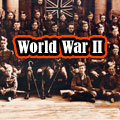Morale and Morality on the Alberta Homefront
Jeff Keshen
Reprinted with permission of the author and publisher of For King and Country: Alberta in the Second World War Moreover, many soldiers felt a strong desire while on leave to let loose after enduring the rigours and petty rules of training; this was especially true, as one might expect, in those prairie camps where signs of civilian life seemed absent. For example, one contributor to the Foothills Flier, the BCATP magazine at Airdrie, described that town as a "runway, a garbage dump, half a hangar, [and] a building in which ... personnel sleep, eat, lounge, and are administered unto", but provided solace to readers by pointing out that the “beer parlours of Calgary lay only 30 minutes down the road”.23
Moreover, many soldiers felt a strong desire while on leave to let loose after enduring the rigours and petty rules of training; this was especially true, as one might expect, in those prairie camps where signs of civilian life seemed absent. For example, one contributor to the Foothills Flier, the BCATP magazine at Airdrie, described that town as a "runway, a garbage dump, half a hangar, [and] a building in which ... personnel sleep, eat, lounge, and are administered unto", but provided solace to readers by pointing out that the “beer parlours of Calgary lay only 30 minutes down the road”.23
To help soldiers steer clear of trouble, military publications, as well as auxiliary services, advised them on places to lodge, eat, and seek entertainment. Those arriving in Edmonton were told about cheap accommodation at the 'Y', canteen services provided by the Salvation Army, a "good Chinese menu slung up at the Green Lantern", and should they have "some extra change", the Macdonald Hotel was recommended as having the “best pub and dancing ....”24 Most behaved, but with every lot came a portion intent on throwing caution to the wind, perhaps believing it best to experience life to the fullest during these precarious times. For instance, records for both the Calgary-based Strathconas and Edmonton Fusiliers contain numerous entries referring to drunk and disorderly conduct, something for which first-time offenders usually received a few days' forfeited pay, but was known to bring repeaters several weeks' fine or time in the stockade, or both.25
More serious from the standpoint of local citizens was the tendency of those in uniform to develop [in the words of one U.S. army psychologist] a rather "direct view towards sex", seeing it as a way to relieve tension, prove their manliness, or obtain a modicum of intimacy before heading towards an uncertain future.26 Military publications printed in Alberta, as elsewhere, not only carried racy cartoons such as Milton Caniff's widely syndicated "Male Call", but also joked about women desperate for men in uniform.27 Bearing such attitudes, more than a few soldiers, in defiance of regimental orders, loitered on streets whistling at young women, or even blocked the way of some in a persistent search for dates - one such gauntlet being along Calgary's 8th Avenue. In both the Strathconas and Fusiliers it became necessary to bar soldiers from hanging around high schools after it was reported that some "annoyed" and even "molested" girls during their lunch hour.28
Besides soldiers too eager for action, communities fretted over lonely wives and fiancés, as well as women of low morality, all of whom were presumed as willing to satisfy. Therefore, police regularly patrolled near military bases to keep watch over camp followers who, as one Calgary law enforcement official contended, were mostly made up of "sexual delinquents", rather than, as a majority of the women themselves claimed, people simply desiring to be close to their loved ones for as long as possible before they got posted abroad.29
Providing apparent legitimacy to such accusations was the rising wartime illegitimacy rate. Whereas the number of fatherless babies reported in Alberta stood at 617 in 1939, this climbed to 720 in 1941 and reached 886 two years later.30 Some social workers claimed that many of the women planned to marry the fathers of these babies, but that these men were shipped overseas before it was realized that a baby was on the way. This explanation, as in other parts of Canada, did not convince provincial officials to extend Mothers' Allowances lest promiscuity be condoned - thus forcing many women to send their child to a foster home or put it up for adoption.
Another disturbing trend related to venereal disease; nationwide, between 1939 and 1940, reported cases among civilians climbed from 7,826 to 10,356.31 For the military the grief was even greater, as just within Canada 35,036 soldiers were stricken between 1 January 1940 and 20 June 1943, accounting for a total of 697,259 hospital days at a cost of $7.955 million - a rate which far exceeded any other illness among those in uniform.32 While major depots like Montreal and Halifax produced VD rates reaching 50 per 1,000 in uniform, the prairies remained a concern, with Edmonton and Calgary attaining wartime peaks of approximately 30 per 1,000.33 In communities across Alberta, police forces launched major offensives against houses of prostitution, with encouragement from military officials. Indicative of what was to come, arrests of those working at Calgary brothels went from 44 in 1938 to 75 the next year.34 Alberta also increased its budget to fight VD, as did other parts of the country, reversing a trend established in 1932 when, in order to save money during the Depression, Ottawa cut off funding provided to the provinces in this area since 1919. By 1942 lectures on VD sponsored by the Provincial Board of Health reached 25,000 people - a figure more than triple that in 1939 - including about 7,000 high school students.35 By 1944 the Alberta Teachers' Association [ATA], reflecting thinking by their counterparts elsewhere in Canada, formally recommended that a prominent place be given to sex education within health classes, first established by the province in 1928.36 Beginning in earnest following a 1942 conference among Western Canadian Health officials in Edmonton, new and comprehensive standardized forms were developed for doctors to help them glean enough information from their VD patients to enable authorities to locate so-called facilitators. This approach was re-emphasized the next year at a national conference in Ottawa which also saw the federal government re-establish VD funding for the provinces and coordinate its efforts more fully with the military to find those guilty of infecting Johnny Canuck.37
Notes
23. D. Hist. 77/636, 1 July 1944, 4-5.
24. Khaki, Vol. 2, No. 19, 7.
25. Lord Strathcona Archives [LS], Regimental Orders, 4 Oct. 1939, 16 Oct. 1939.
26. Henry Elkins, “Aggressive and Erotic Tendencies in Army Life”, American Journal of Sociology, Vol 51, 5 [March 1946], pp. 408-13.
27. D. Hist 77/650, June 1941, 5.
28. GL, MG 1961, 10 March, 1941, 6 June 1941.
29. NAC, MG 28 I 10, Young Men's Christian Association papers, Vol. 82, File 1944, “report for the Committee on Morale - Research on Rumours”, n.d.
30. PAA, accession number 68.145, Department of Public Health, 1944 report, 39.
31. Statistics Canada, Incidence of Notifiable Diseases by Province, Number of Cases and Rates, 1924-1968 (Ottawa: 1970) 86-7.
32. Canadian School Journal, Vol. 23, No. 2 (Feb 1945), 48.
33. D. Hist. 112.21009 (D20), V.D. Rates among the Army in Canada by Districts, 1942.
34. Margaret Gilkes and Marilyn Symons, Calgary's Finest: A History of the City Police Force, [Calgary: Century Calgary Publications, n.d.], p. 88.
35. PAA, 68.145, 1939 Report, 19; 1942 Report, 39.
36. Ibid., 1944 Report, 40-1.
37. Ibid, 1942 Report, 21; Department of National Health and Welfare, 1945 Report, 54-60.








